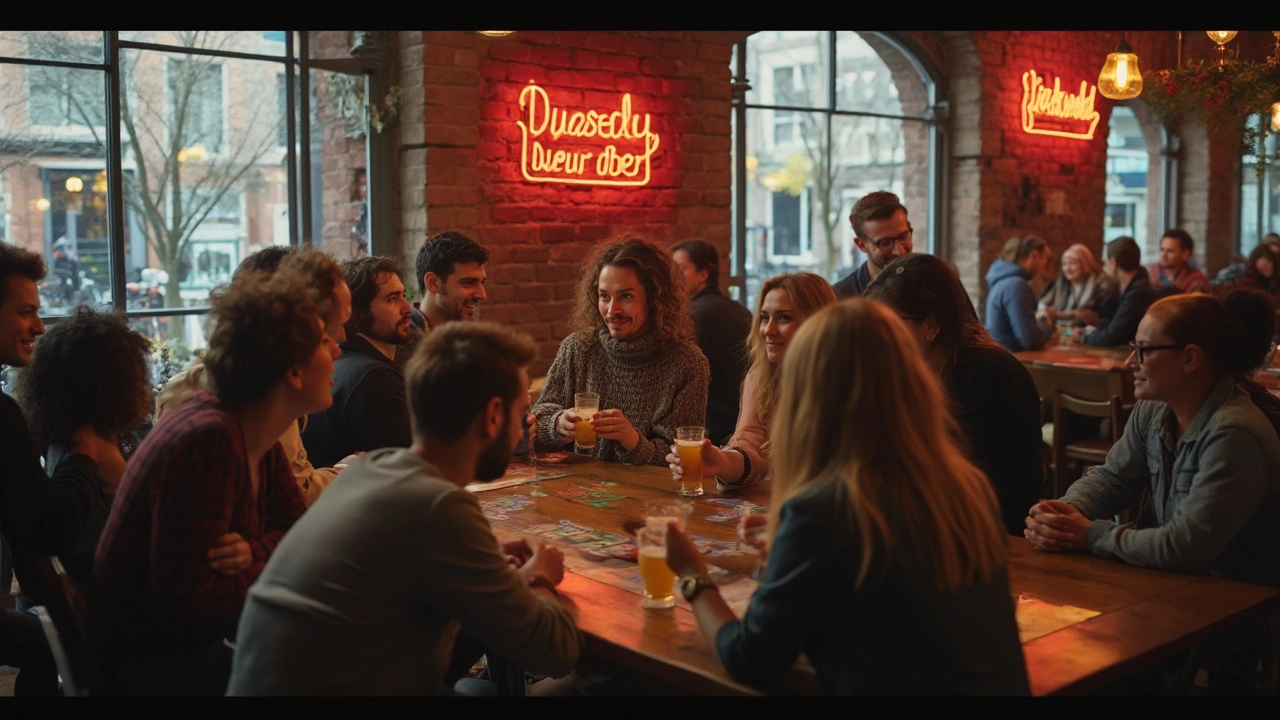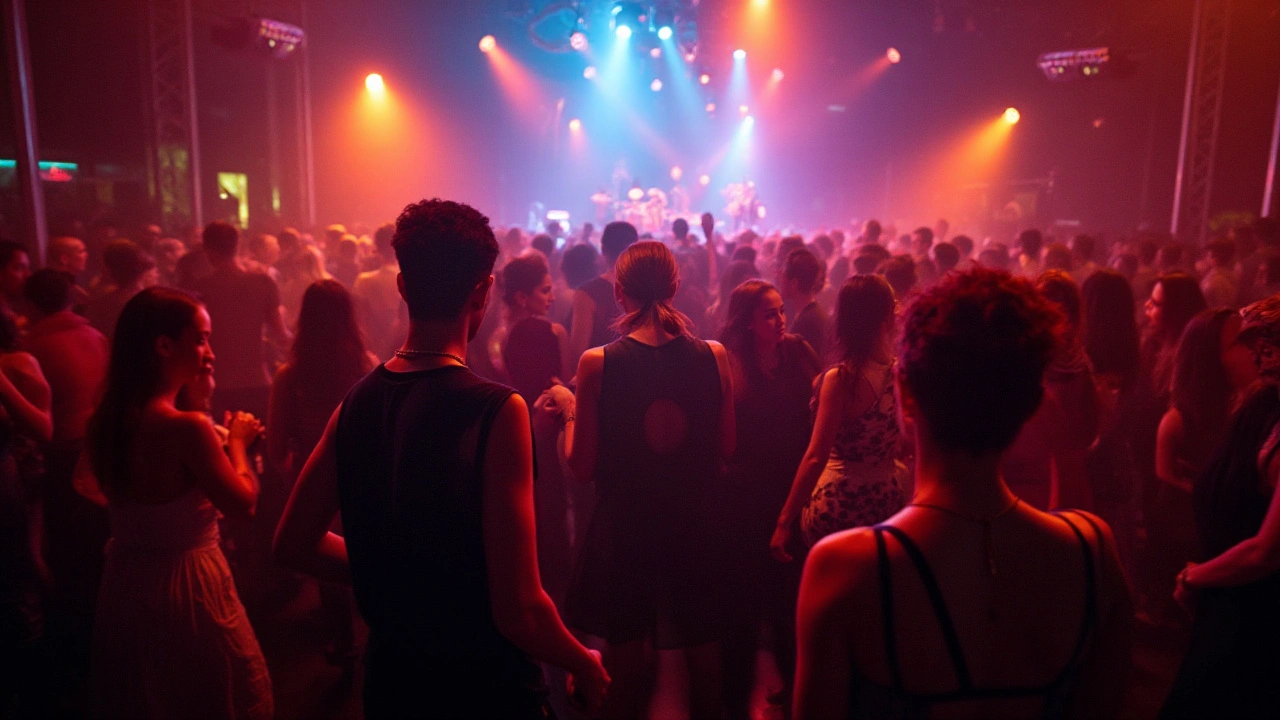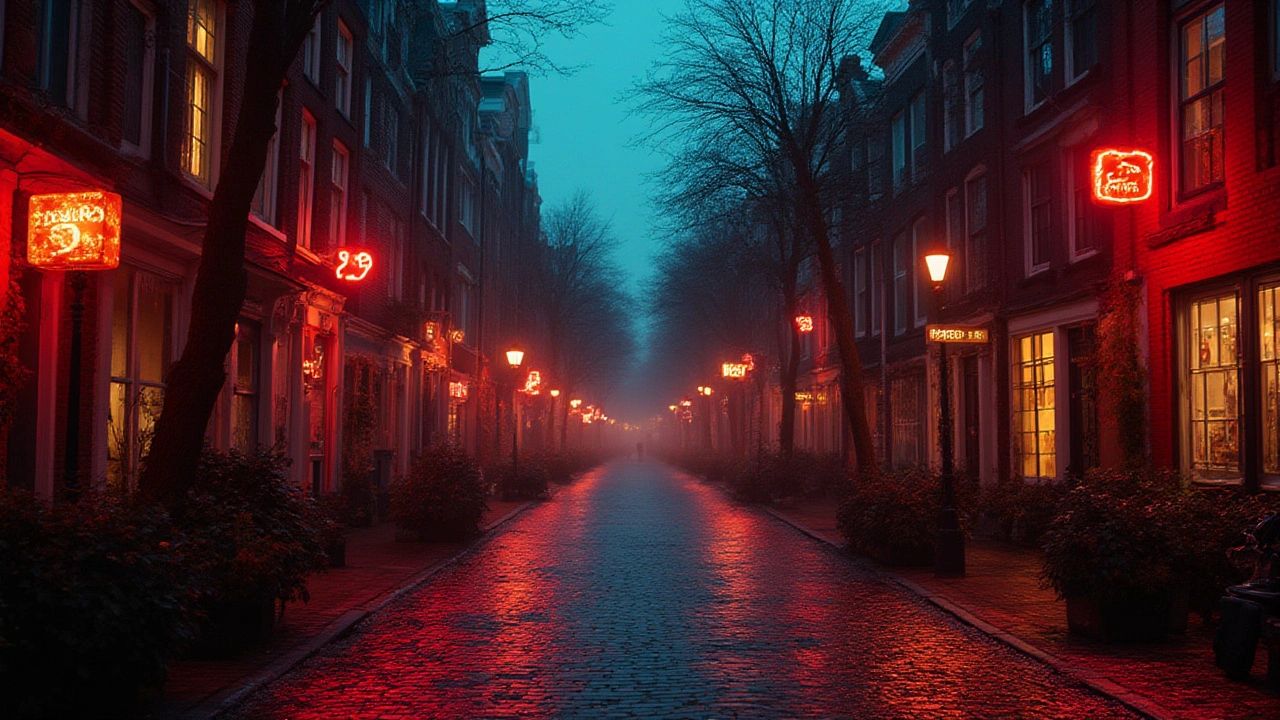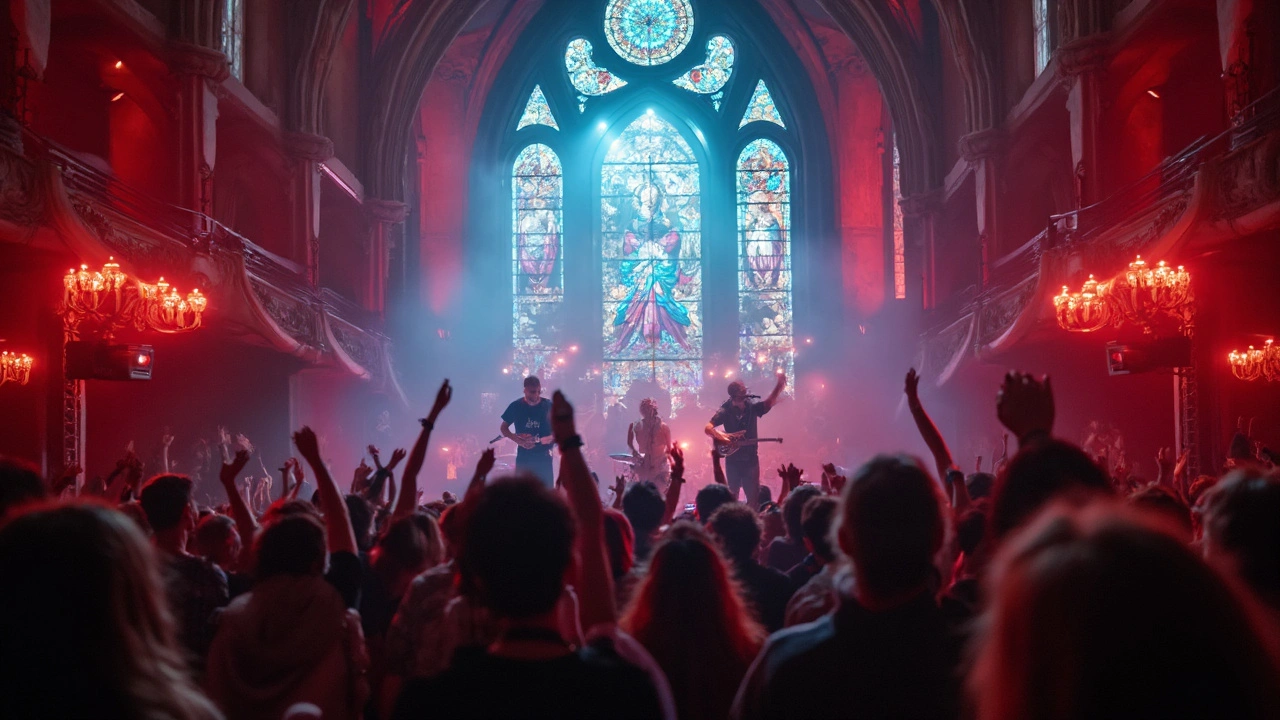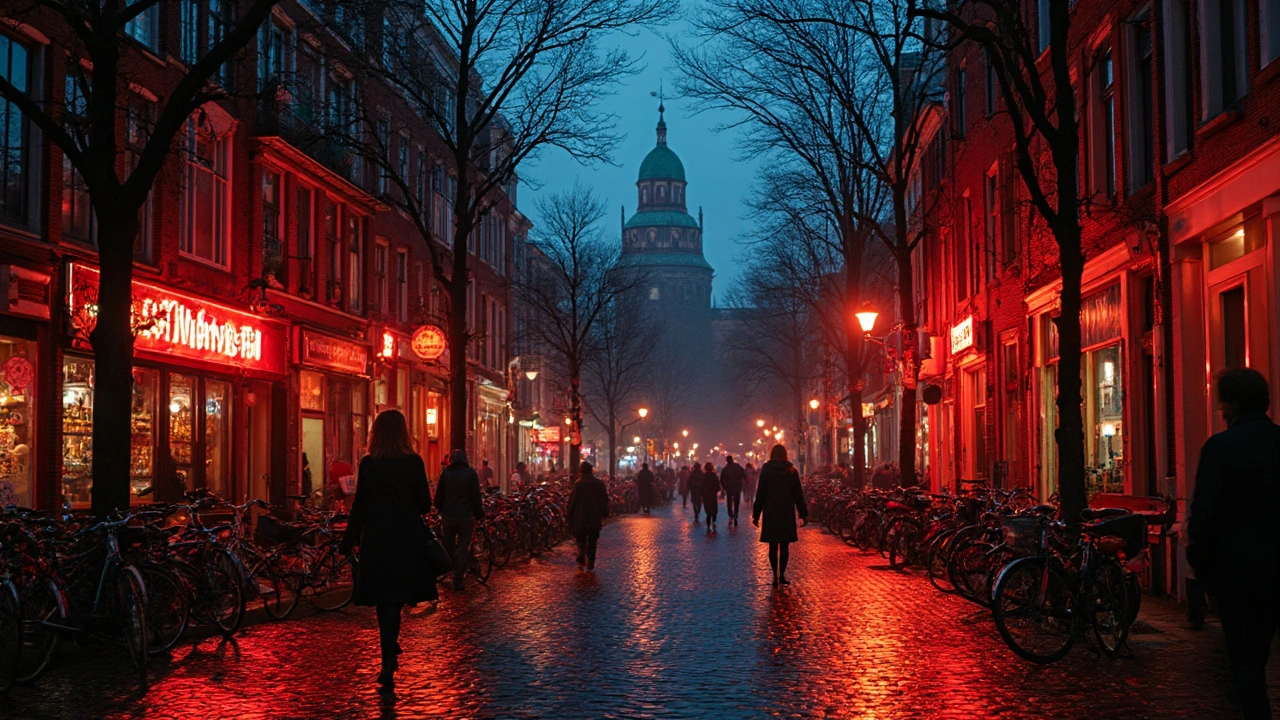
The Amsterdam Red Light District, or De Wallen, is nothing if not striking. Step out of Centraal Station and you’ll feel that buzz almost right away—glowing neon windows, canals hugging narrow old streets, a jumble of curious tourists and locals just getting on with their day. Here, the lines between everyday life and something more out-there get totally blurred.
If you’re coming to Amsterdam and think this area is all about sex, you’re only seeing half the picture. There are historic churches tucked between brothel windows, late-night snack bars dishing out piping hot fries, even quirky museums like the Museum of Prostitution and the Hash Marihuana & Hemp Museum. The main reason people visit De Wallen is curiosity, so don’t worry—you’re not the only first-timer looking around in wide-eyed wonder.
Want to avoid tourist traps? Wander off from the busiest street, Oudezijds Achterburgwal, around dinner time. You’ll catch locals grabbing frites at Manneken Pis or heading toward Brouwerij de Prael for craft beer. Stick close to the main canals to keep your bearings, and remember: taking photos of the windows is a strict no-go. Security here won’t hesitate to call you out, and the workers have every right to expect their privacy. This rule gets ignored way too often, but don’t be that person.
- A Walk Down De Wallen: First Impressions
- Understanding the Red Lights and Their Meaning
- Unique Spots: Museums, Churches, and Coffee Shops
- Safety Do's and Don'ts
- Local Tips for Food, Drinks, and Shopping
- What Happens After Dark?
A Walk Down De Wallen: First Impressions
Jump off the train at Centraal Station and you're just a five-minute stroll from De Wallen, the oldest and wildest part of Amsterdam. Right away, the neighborhood grabs your attention—old brick lanes crisscross narrow canals, and you literally walk over tiny bridges lined with bikes. Don’t expect hidden alleyways. De Wallen is loud about what it’s about. The Amsterdam Red Light District is home to hundreds of red-lit windows, each one a legal workspace for sex workers. Most windows are ground-level, with flashing red or sometimes purple lights, and a range of curtains and signs you’ll spot as you roam.
The district is packed with action. You'll see groups of friends, couples, and even older folks—this isn’t some secret spot. De Wallen averages around 900,000 visitors every month, especially busy on Friday and Saturday nights. Locals either use it as a shortcut or sit outside with a beer, totally unfazed by the chaos. Tour groups wearing matching headphones snake past shop windows, all while delivery bikes dodge selfie-takers. It's hectic around 9 to 11 pm, when the windows are bright and the crowds peak. Things run quieter in the early morning if you're looking to actually notice the district’s 14th-century buildings or the Oude Kerk, Amsterdam's oldest church.
Just in case you’re into stats and facts, check out these numbers:
| Feature | Number |
|---|---|
| Red-lit Windows | Over 300 |
| Annual Visitors | 10 million+ |
| Sex Workers (Registered) | ~700 |
| Area (sq km) | ~0.5 |
| Years in Operation | 700+ |
The energy here is very direct. Window shopping takes on a whole new meaning, but it’s not all about the red lights. As you step deeper into De Wallen, the smell of fresh waffles and woodsmoke from nearby coffee shops mingles with street food stands. Side streets lean right up against each other—you can walk the whole district in around 30 minutes if you don’t linger, but most people do. Pro tip: if you want fewer crowds, swing by in late morning before most tourists roll out of bed. Street cleaners give the cobbles a once-over, and you get to see what Amsterdam is really like before the crowds roll in.
Understanding the Red Lights and Their Meaning
Most people know Amsterdam’s Red Light District for those glowing windows. But what do the red lights really mean? Each window with a red neon glow signals a legal sex worker who rents that space. If the curtain is drawn, the worker isn’t available. If the window is open and the person makes eye contact, it means they're open for business. This super clear system makes things less awkward than you might think.
You’ll spot other colors too. Blue lights mean the worker is transgender. Sometimes there’s a purple light, which pops up in specialty clubs or alternative venues. But red is the most common.
Here’s how it all works:
- The windows are open roughly from 11:00 am until 3:00 am, but the busiest time is after dark.
- All workers are self-employed and get to set their own hours and prices. You can ask about service and prices directly—no need to feel weird, it’s normal here.
- Negotiating or haggling isn’t considered rude, but be respectful. If you get turned down, just smile and move on.
- Doorbells below windows mean you’re interested—pressing it signals you’d like to talk privately.
- There are also some windows above ground at Oudezijds Achterburgwal and along side alleys, so don’t miss those if you’re exploring.
The Amsterdam Red Light District didn’t start overnight. It’s been regulated since the 1980s, and all workers must be over 21 and registered with the city. Legal brothels mean regular health checks and safety measures are in place, so both workers and visitors can feel secure. It’s a much more open and organized scene than most people expect.
Final thing to remember: never take photos of the windows or the workers. The signs are up for a reason and privacy matters here, even in such a public place.
Unique Spots: Museums, Churches, and Coffee Shops
De Wallen isn’t just about the famous red-lit windows. You’ll find a bunch of quirky, surprising places packed into just a few streets, each with its own story. If you’re looking to do more than just gawk at the nightlife, here’s where things get interesting.
Start with the Oude Kerk, literally meaning “Old Church.” It’s the oldest building in Amsterdam, dating back to 1306, and sits right in the heart of the Amsterdam Red Light District. You have historic organ concerts, ever-changing art installations, and even a graveyard right beneath the church floor. The view from the tower is hard to beat, especially if you want Insta-worthy shots of the canal maze below.
If you want something really offbeat, check out the Museum of Prostitution, also called Red Light Secrets. It’s set in an actual former brothel and gives a no-filter look into the lives of the window workers—what their work is really like, what the rooms look like, and what rules keep things safe and legal. Grab the audio guide for weird, real stories you won’t hear on the street.
The Hash Marihuana & Hemp Museum is nearby too, and trust me, it’s not just for stoners. There’s a deep dive into the cultural history of cannabis in Holland—how hemp fueled Dutch trading ships, the science behind the plant, and its place in the city today. Entry also gets you into their little greenhouse down the street.
Let’s talk about coffee shops, because in Amsterdam, that means weed, not just caffeine. Bulldog is the most famous name right in the area, but locals prefer the less crowded options like Coffeeshop Rusland or Coffeeshop The Stud. So if you’re curious, look for the cannabis leaf sign, pay attention to “house rules,” and know that staff have no patience for rude or drunk customers. Try to stick to pre-rolls or ask the barista what’s mild if you’re new to the scene.
Here’s a quick look at what you might pay for popular attractions:
| Spot | Entry Price (EUR) |
|---|---|
| Oude Kerk | €13 standard |
| Museum of Prostitution | €14.50 adult |
| Hash Marihuana & Hemp Museum | €9 standard |
| Coffee shop (joint) | From €5 |
Most museums accept credit cards, but a lot of small bars or street food stalls don’t—so grab some cash at the beginning of your walk. Above all, keep your eyes peeled: the best stories in De Wallen hide in plain sight.
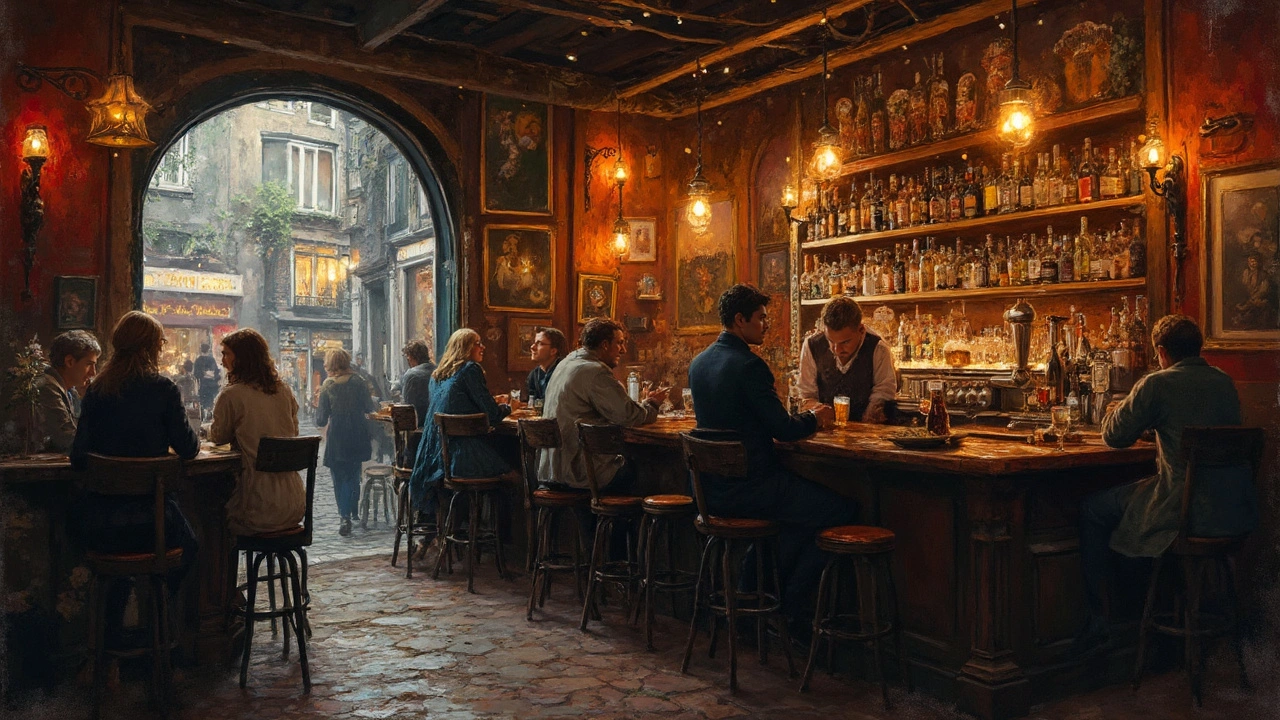
Safety Do's and Don'ts
Walking through the Amsterdam Red Light District is safe, but only if you keep your wits about you. The place is packed with tourists every night, and pickpockets know it. Stick to these practical safety tips so your experience stays fun and hassle-free.
- Protect your stuff: Keep your phone, wallet, and passport zipped up. Sling your bag to the front. Pockets are easy targets, especially in crowds around Oudezijds Voorburgwal and side alleys.
- Stay respectful: Never take photos of sex workers or the windows, not even sneaky snaps. There are security people everywhere, and you might end up getting shouted at or having your phone taken.
- Watch for bike lanes: Locals on bikes aren’t slowing down for tourists! Stick to sidewalks, and double-check before stepping off curbs.
- Skip street deals: People will offer you cheap drugs or fake tickets. Don’t buy anything off random folks. Amsterdam has strict police patrols in the area, and drug-related arrests do happen.
- Bring cash, but not too much: Most bars and snack shops take cards, but a few smaller places still like cash. ATMs here are notorious for pickpockets waiting nearby.
- Travel in pairs or groups at night: It’s easy to get turned around, especially after a few beers. If you’re solo, stick to busier streets and avoid the narrowest alleys late at night.
Street scams aren’t rare in De Wallen. Here’s a quick look at how often common issues pop up:
| Incident Type | Reported Cases/Month* | Hotspots |
|---|---|---|
| Pickpocketing | 80-120 | Around Oude Kerk, Warmoesstraat |
| Street dealing | 35-60 | Dammersstraat, near Dam Square |
| Unlicensed tours | 15-30 | Main canals, Oudekerksplein |
*Data from Amsterdam Police records in 2024
Police presence is heavy, especially on weekends. If you run into trouble or feel harassed, look for officers on bikes (they speak English). Emergency number is 112, but for non-urgent stuff like lost property, use 0900-8844. Don’t hesitate to ask for help—locals are used to spotting confused visitors.
Local Tips for Food, Drinks, and Shopping
Hungry after walking the Amsterdam Red Light District? You'll find almost everything you could want, whether it’s a late-night snack, a decent pint, or Dutch souvenirs that aren't cheesy.
For a true quick bite, Manneken Pis and Vlaams Friteshuis Vleminckx are famous for their Dutch fries—expect crunchy outside, fluffy inside, and at least 20 choices of sauce. If you’re craving something sweet, swing by Metropolitan for Belgian chocolates or a stroopwafel. Breakfast people should try Pancakes Amsterdam on Prins Hendrikkade; savory pancakes here are a legit local experience.
Beer is just as big a deal. Brouwerij de Prael is a craft brewery right in the Red Light District and always buzzing with tourists and locals. They offer sampler trays if you can’t pick just one. Tiny brown cafés like Café Chris have been around for centuries, and you’ll get a crash course in Dutch gezelligheid (that’s cozy, friendly vibes).
The coffee shop scene is famous for a reason. The Bulldog is the iconic spot, but sometimes it’s swamped—try Otherside Coffeeshop or Dolphins for smaller crowds and a more laid-back feel. Just remember, "coffee shop" here means cannabis, not cappuccino.
Souvenir hunting? Most of the shops are packed with magnets and tulip bulbs, but Jamin is a cool candy store for Dutch licorice, and Condomerie on Warmoesstraat is the place for novelty or handmade condoms if you want something quirky to take home. For fancier gifts, Amsterdam Duck Store has the city’s weirdest rubber ducks, or head to Henri Willig for locally made cheese.
| Spot | What To Try | Average Price (EUR) |
|---|---|---|
| Manneken Pis | Dutch fries | €4-6 |
| Brouwerij de Prael | Beer sampler | €8-12 |
| Metropolitan | Chocolates, stroopwafel | €2-10 |
| Jamin | Licorice, Dutch candy | €3-7 |
| Henri Willig | Cheese giftbox | €10-20 |
Card payments are the norm, but carry a few euros in coins—some small bakeries and street stalls might not take cards or have a minimum spend.
What Happens After Dark?
When the sun sets, the Amsterdam Red Light District flips a switch. What was lively in daylight becomes a totally different scene after dark—louder, wilder, and honestly, way more crowded. The glow from the red and blue neon is even brighter, tourists bunch up around the main canal, and you can sometimes hear laughter and music echoing all the way to Dam Square.
Most windows with sex workers are fully open for business from 7 PM till 3 or 4 in the morning. Weekends get especially packed, sometimes shoulder-to-shoulder, especially along Oudezijds Achterburgwal and Warmoesstraat. You’ll see bouncers and street security out in force, keeping things moving and mostly safe.
After dark, bars fill up fast. Café Remember and The Old Sailor churn out local beers and Dutch gin (jenever), while Bulldog, one of the oldest coffee shops, gets a mix of tourists and locals. Hungry? FEBO vending machines are an experience—just pop in a Euro and grab a hot kroket or kaassoufflé from behind the glass.
Nightlife here isn’t just about the windows or the bars. You might stumble onto a walking tour explaining the area’s history and answering the stuff you’re too shy to Google. Clubs like Club AIR (a bit further out), and Casa Rosso (the iconic erotic theater) crank it up with live performances, but keep your expectations realistic—Amsterdam’s Red Light nightlife is more cheeky than dangerous.
- Scams are more common after dark. Beware of people selling “tickets” to secret shows, aggressive approaches, or street dealers pushing fake substances.
- Plan bathroom stops. Public toilets and some bars charge a small fee, so keep coins handy.
- Lost something? The politiebureau (police station) at Beursstraat 33 stays staffed late into the night.
Want some stats? Here’s what you’re really walking into at peak night hours:
| Feature | Details |
|---|---|
| Window brothels | ~300 total in the district |
| Nighttime foot traffic | 10,000+ people at weekends |
| Average drink prices (beer) | €5-7 in most bars |
| Number of police patrols* | More than double after 9 PM |
*Actual numbers can vary by night and season. City safety is a big deal, so there’s usually a visible police presence.
Most important thing: respect everyone’s boundaries—workers, security, and fellow visitors. Don't take photos of people in windows. Don’t even try. And don’t be surprised if you end the night with serious stories for your friends back home—Amsterdam after dark is never boring.

